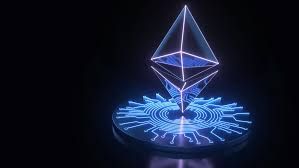All hands on deck, as we fully await the long-anticipated Merge that will transition ethereum blockchain from the use of excessive energy Proof of Work (PoW) to an alternative less energy consumption source Proof of Stake (PoS), in the history of blockchain, ethereum merge is seen as one of the biggest events so far that has got a lot of attention from users over the world waiting to see how an enormous data migration will unfold without incurring any loss on crypto space since ethereum blockchain host majority of decentralized application (Dapps) smart contract protocols, a slight security breach during this transition can account for loss of millions of dollars, there shouldn't be any room for mistakes during the merge transition process.

When Merge
The merge which is expected to be completed between September 10th-20th can happen any moment from now, this migration process could be simple for those who are not tech savvy, but for ethereum core developers several years of coding, troubleshooting, and testing have been put in place to protect the blockchain from any known attack a major attack known as replay attack is considered to be a major problem which could affect uninformed users interacting with the network during the last 12 minutes of migration.
What is the merge
It's an upgrade of the ethereum blockchain network from the use of sophisticated computational devices like ASIC hardware solving complex puzzles demanding high-speed processing powers/energy to validate users' transactions known as Proof of Work, to a less intensive energy consumption process of validating transactions known as Proof of Stake that requires staking a certain amount of ethereum token on the blockchain which improves scalability and speed.
With PoS rather than performing complex work that requires calculative means of solving complex task a different consensus that requires locking up tokens (Ethereum) will be used for validation of transactions on the ethereum network.
Gas fee
Block time for processing transactions on the ethereum network is currently 15 transactions per second, an approximate range of 1-1.5 million transactions are processed on daily basis on the network.
For transaction to be processed certain gas fee will be paid depending on how complex a transaction is, with such a high number of daily processed transactions ethereum blockchain can get congested increasing the paid price for processing transaction.
The merge aims to increase the ethereum block process time by over 150,000 times once the merge is fully launched, the problem of the high gas fee might likely be solved.
Final thought
There is no guarantee as to once, the merge is fully rolled out problems about gas fee, and scalability will be immediately fixed, more upgrades will follow subsequently the merge is focused on migrating ethereum blockchain from PoW to PoS the surge is improving ethereum scalability and final upgrade which will follow is the Verge which will help optimize database storage.